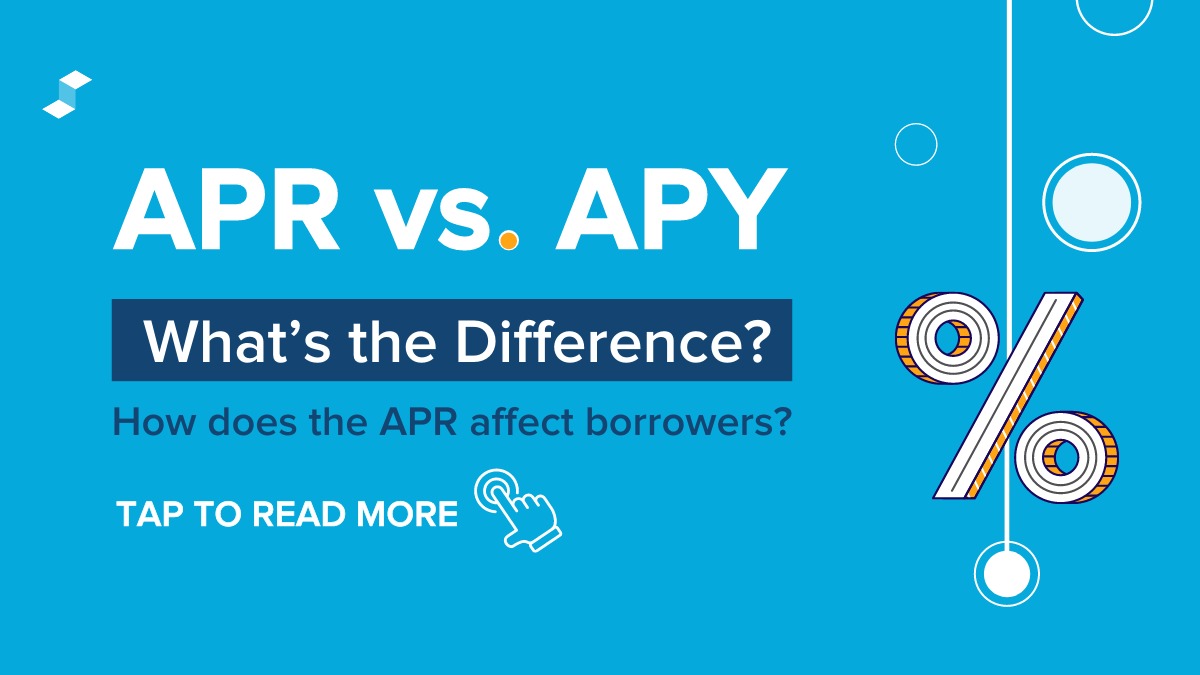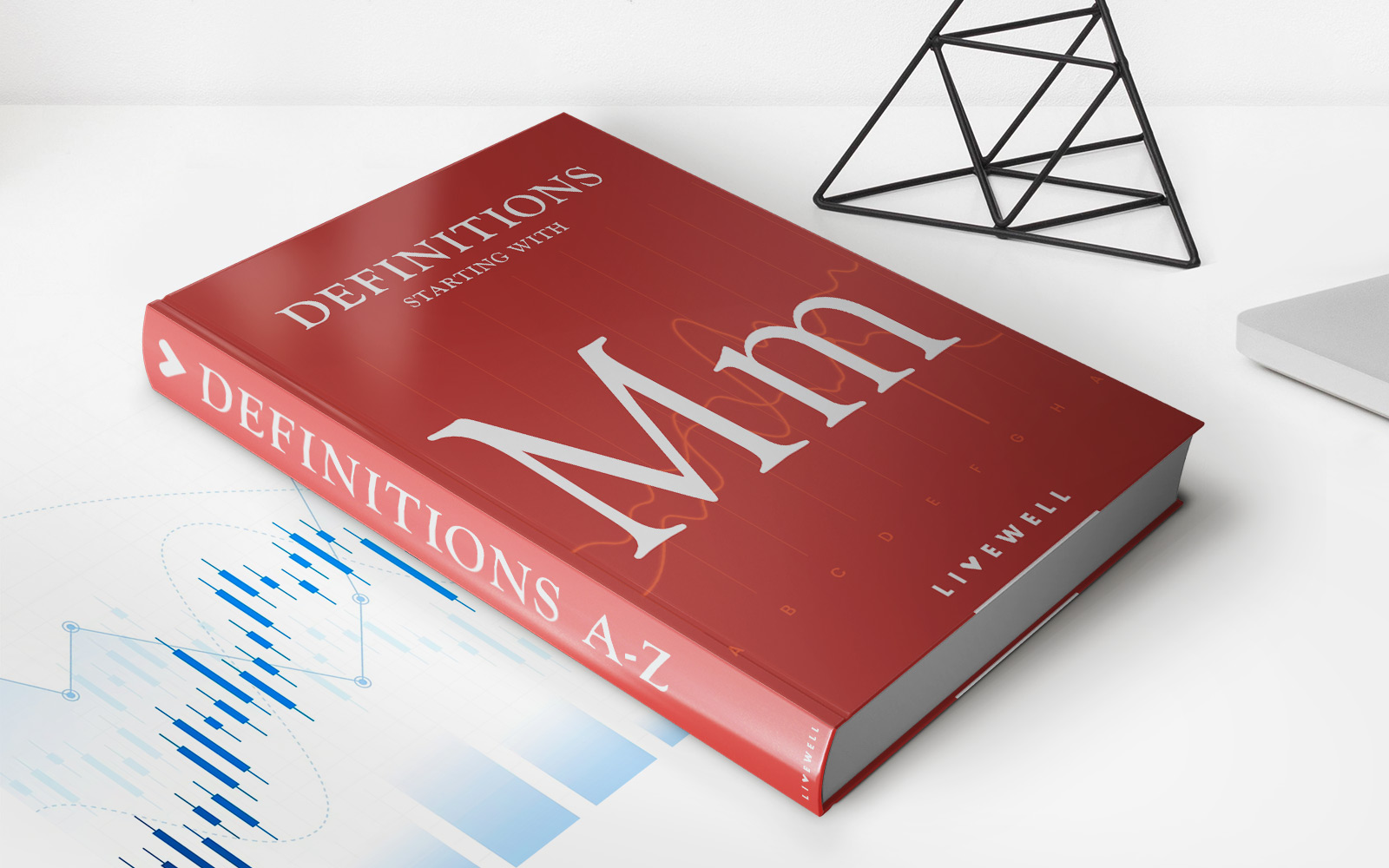Home>Finance>What Is The Primary Difference Between Homeowners Insurance And Renters Insurance?


Finance
What Is The Primary Difference Between Homeowners Insurance And Renters Insurance?
Modified: December 29, 2023
Discover the key distinction between homeowners insurance and renters insurance. Learn how each type of insurance affects your finances.
(Many of the links in this article redirect to a specific reviewed product. Your purchase of these products through affiliate links helps to generate commission for LiveWell, at no extra cost. Learn more)
Table of Contents
Introduction
When it comes to protecting your property and possessions, insurance plays a vital role. For homeowners and renters, having the right insurance coverage is essential to safeguard against potential risks and unforeseen events. However, it’s important to understand that homeowners insurance and renters insurance are two distinct types of coverage tailored to different living situations.
Homeowners insurance is designed for those who own their home, whether it’s a house, condo, or townhouse. This type of insurance provides coverage for the structure of the property, as well as personal belongings and liability protection. On the other hand, renters insurance is specifically for individuals who are renting a property or living in an apartment. Renters insurance offers similar coverage for personal belongings and liability but does not extend to the structure of the property since that falls under the responsibility of the landlord.
Understanding the primary differences between homeowners insurance and renters insurance is crucial in determining the right type of coverage for your needs. In this article, we will delve deeper into these distinctions and explore various factors that differentiate one from the other.
Coverage
The most significant difference between homeowners insurance and renters insurance lies in the coverage provided. Homeowners insurance typically includes two main components: coverage for the structure of the home and coverage for personal belongings. The structure coverage protects against damage or loss to the physical structure of the property, including the walls, roof, and foundation. Personal belongings coverage, on the other hand, safeguards the homeowner’s possessions, such as furniture, appliances, and clothing, from theft, fire, or other covered perils.
In contrast, renters insurance focuses solely on coverage for personal belongings. Since renters do not own the physical structure of the property they are living in, they do not need coverage for the building itself. Renters insurance provides financial protection for personal items in the event of theft, fire, or other covered incidents. This coverage is crucial for tenants as it helps to replace or repair their belongings in case of damage or loss.
It’s important to note that both homeowners and renters insurance also offer liability coverage. This coverage protects the policyholder in case someone is injured on their property and they are legally liable for the damages. Liability coverage can help cover medical expenses, legal fees, and even damages awarded in a lawsuit. Whether you own a home or rent, having liability coverage is vital to protect your financial well-being.
While renters insurance primarily focuses on personal belongings coverage, some policies may include limited coverage for structural improvements made by the tenant, such as upgrades or renovations that enhance the living space. However, these coverage types and limits can vary, so it’s essential to carefully review the policy details to determine the extent of coverage provided.
In summary, homeowners insurance offers coverage for both the structure of the property and personal belongings, while renters insurance focuses solely on coverage for personal belongings. Additionally, both types of insurance include liability coverage to protect against potential legal and financial liabilities arising from injuries or damages on the property.
Property Ownership
One of the key differences between homeowners insurance and renters insurance is the ownership of the property itself. Homeowners insurance is specifically designed for individuals who own their home, whether it’s a single-family house, condominium, or townhouse. As property owners, homeowners have a vested interest in protecting the physical structure of their property, as well as their personal belongings inside.
Renters, on the other hand, do not own the property they are residing in. Instead, they have a rental agreement or lease that grants them the right to occupy the space for a specified period. As such, the responsibility for insuring the structure of the property falls upon the landlord or property owner. This means that renters do not need coverage for the building itself, as that is the landlord’s responsibility.
Renters insurance, therefore, focuses solely on providing coverage for the tenant’s personal belongings and liability protection. It allows renters to safeguard their possessions and have financial protection against potential risks, such as theft, fire, or other covered perils. While renters may not have ownership of the property, they still have valuable items that they want to protect in the event of an unfortunate incident.
It’s important to note that renters insurance does not cover any structural damage to the rental property caused by the tenant. Any repairs or renovations needed to restore the property’s structure would be the responsibility of the landlord. As a renter, it’s important to understand your rights and responsibilities in terms of property maintenance and insurance coverage.
Homeowners, on the other hand, have a more comprehensive insurance need as they are responsible for protecting the structure of their property in addition to their personal belongings. The value of the property itself, including its replacement cost, affects the coverage and premiums of homeowners insurance. Property ownership comes with a greater level of responsibility and financial investment, necessitating more extensive insurance coverage.
In summary, homeowners insurance is tailored for property owners, providing coverage for both the structure of the property and personal belongings. Renters insurance, on the other hand, focuses solely on personal belongings and liability coverage as renters do not have ownership of the property and are not responsible for insuring the structure.
Liability Coverage
Both homeowners insurance and renters insurance include liability coverage, which protects the policyholder in the event that someone is injured on their property or if they cause damage to someone else’s property. Liability coverage is crucial as it helps protect against potential legal and financial liabilities that may arise from accidents or injuries.
For homeowners, liability coverage provides protection not only within the confines of their property but also extends to incidents that occur outside of their premises. This means if someone is injured or their property is damaged due to the homeowner’s negligence, the liability coverage can help cover medical expenses, legal fees, and even damages awarded in a lawsuit.
Renters insurance also includes liability coverage, but it is typically limited to incidents that occur within the rented property. This coverage protects tenants if someone gets injured on their premises or if they accidentally cause damage to someone else’s property. It is important for renters to have liability coverage as they can be held financially responsible for injuries or damages that occur within their rented space.
Liability coverage is essential for both homeowners and renters as accidents can happen anywhere, and the resulting legal and medical expenses can be substantial. Without adequate liability coverage, individuals could face significant financial strain if they are found liable for injuries or damages.
It is worth noting that the amount of liability coverage provided by homeowners and renters insurance can vary. Policyholders can choose the coverage limits that best align with their needs and financial circumstances. It is advisable to consider the potential risks and liabilities associated with the property and select a coverage amount that adequately protects against those risks.
In summary, both homeowners insurance and renters insurance include liability coverage to protect the policyholder in case someone is injured on their property or if they cause damage to someone else’s property. Homeowners insurance typically offers broader coverage that extends beyond the property, while renters insurance focuses on incidents that occur within the rented premises.
Cost Factors
When it comes to insurance, the cost is always an important consideration. The premiums for homeowners insurance and renters insurance can vary based on a variety of factors. Understanding these cost factors can help individuals make informed decisions about their insurance coverage and budget accordingly.
For homeowners insurance, several factors can influence the cost of the premiums. One of the primary factors is the value of the property itself. The replacement cost of the home, including its structure and any additional features, such as upgrades or renovations, will impact the insurance premiums. Other factors that can affect the cost include the location of the property, the age of the home, the materials used in construction, and the proximity to fire hydrants or fire stations. Additionally, the coverage limits and deductibles selected by the homeowner will also influence the cost of the policy.
On the other hand, renters insurance premiums are typically lower compared to homeowners insurance. This is because renters insurance only covers personal belongings and liability within the rented property, and the insurance company does not have to take into account the structure of the building. Like homeowners insurance, the cost of renters insurance can be influenced by factors such as the location of the rental property, the coverage limits chosen, and the deductible amount.
Another important factor that can affect the cost of both homeowners and renters insurance is the insurance company itself. Different insurance companies have varying pricing structures and discounts, so it’s worth shopping around and comparing quotes from multiple insurers to find the best coverage at the most competitive rate.
It is also worth noting that bundling insurance policies can lead to cost savings. Many insurance companies offer discounts to policyholders who have multiple types of insurance coverage with them. For example, someone who has both homeowners and auto insurance with the same company may be eligible for a discount on their premiums.
Lastly, individual factors such as the policyholder’s credit score, claims history, and risk profile can also influence the cost of insurance premiums. Those with a higher credit score and a clean claims history may qualify for lower premiums, while individuals with a history of claims or higher perceived risk may face higher premiums.
In summary, the cost of homeowners insurance and renters insurance can vary based on factors such as the value of the property, location, coverage limits, deductibles, insurance company, and individual risk profile. Shopping around for quotes and considering bundling policies can help individuals find the best coverage options at the most competitive rates.
Deductibles
Deductibles are an important aspect of insurance policies, including both homeowners insurance and renters insurance. A deductible is the amount of money that the policyholder is responsible for paying out of pocket before the insurance coverage kicks in. Understanding how deductibles work can help individuals make informed decisions about their insurance coverage.
In homeowners insurance, there are typically two types of deductibles: a standard deductible and a hurricane deductible. The standard deductible applies to most covered perils, such as fire, theft, or vandalism. The policyholder is responsible for paying this deductible amount before the insurance company pays for any covered damages. The hurricane deductible, on the other hand, applies specifically to damage caused by hurricanes or severe windstorms. This deductible is usually a percentage of the insured value of the home and is typically higher than the standard deductible amount.
For renters insurance, the concept of a deductible works in a similar way. The policyholder is responsible for paying the deductible amount before the insurance coverage takes effect. This deductible applies to covered losses, such as theft, fire, or water damage, to the renter’s personal belongings. The specific deductible amount for renters insurance can vary depending on the policy and the individual’s chosen coverage.
Choosing a deductible amount is a balancing act between the premium cost and the out-of-pocket expenses. A higher deductible generally leads to lower insurance premiums, while a lower deductible results in higher premiums. It’s important to consider your financial situation and ability to handle a larger out-of-pocket expense in the event of a claim when selecting a deductible amount.
It’s also crucial to note that deductibles are typically per occurrence, meaning that if multiple losses occur during the same event or claim, the deductible is only paid once. For example, if a homeowner’s insurance policy has a $1,000 deductible and there is damage from both wind and hail during a storm, the homeowner only has to pay the $1,000 deductible once, not twice.
Insurance companies may offer different deductible options, allowing policyholders to select the amount that best fits their needs. It’s essential to review and understand the deductible options provided by the insurance company and select a deductible that aligns with your financial comfort level.
In summary, deductibles are an important component of homeowners insurance and renters insurance. Policyholders are responsible for paying the deductible amount before the insurance coverage takes effect. Selecting a deductible amount involves considering the trade-off between premium costs and out-of-pocket expenses when making a claim.
Additional Living Expenses
In the unfortunate event that a home becomes uninhabitable due to a covered peril, such as fire, extensive water damage, or natural disaster, both homeowners insurance and renters insurance provide coverage for additional living expenses. This coverage helps policyholders afford temporary living arrangements while their home is being repaired or rebuilt.
For homeowners insurance, additional living expenses coverage, also known as loss of use coverage, can help pay for expenses such as temporary housing, hotel stays, meals, and other living expenses incurred during the displacement. This coverage typically has a limit, which is a percentage of the dwelling coverage limit. It’s important to carefully review the policy to understand the specific coverage and limits for additional living expenses.
Renters insurance also includes coverage for additional living expenses in the event that the rented property becomes uninhabitable due to a covered loss. Similar to homeowners insurance, this coverage helps pay for temporary living arrangements, such as hotel stays, rental properties, and other necessary expenses during the displacement. Again, it is essential to review the policy details to understand the coverage limits and any specific requirements or exclusions.
When it comes to additional living expenses, policyholders should keep in mind that the coverage is typically provided on an “actual loss sustained” basis. This means that the insurance company will only cover the difference between the policyholder’s normal living expenses and the increased expenses incurred due to the displacement.
In addition, it’s important to note that coverage for additional living expenses is generally available for a reasonable period of time. The length of coverage varies depending on the insurance policy and the specific circumstances. Typically, coverage is provided until the home is repaired or rebuilt, or until the policy limits or time limits are exhausted.
It’s worth mentioning that policyholders are typically required to mitigate and minimize their additional living expenses as much as possible. This means making reasonable efforts to find accommodations of similar quality at a similar cost to their previous living arrangements.
In summary, both homeowners insurance and renters insurance provide coverage for additional living expenses in the event that a covered event renders the property uninhabitable. This coverage helps policyholders afford temporary housing and additional expenses incurred during displacement. It’s important to review the policy details and understand the coverage limits and requirements for additional living expenses.
Conclusion
In conclusion, homeowners insurance and renters insurance are two distinct types of coverage tailored to different living situations. Homeowners insurance is designed for those who own their property, providing coverage for both the structure of the home and personal belongings. On the other hand, renters insurance is specifically for those who are renting a property or living in an apartment, offering coverage for personal belongings and liability.
Key differences between homeowners insurance and renters insurance include property ownership, with homeowners having ownership of the property they reside in, and renters not owning the property they rent. Furthermore, homeowners insurance includes coverage for the structure of the property, while renters insurance focuses solely on personal belongings. However, both types of insurance offer liability coverage to protect against potential legal and financial liabilities.
The cost of homeowners insurance is influenced by factors such as the value of the property, location, coverage limits, deductibles, insurance company, and individual risk profile. Renters insurance premiums are generally lower, as they do not include coverage for the structure of the property. It’s important to compare quotes from multiple insurers and consider bundling policies for potential cost savings.
Deductibles are another important aspect to consider in both homeowners and renters insurance. A deductible is the amount the policyholder must pay out of pocket before insurance coverage takes effect. The choice of deductible affects premium costs and out-of-pocket expenses in the event of a claim.
Additionally, both homeowners and renters insurance provide coverage for additional living expenses if the property becomes uninhabitable due to a covered event. This coverage helps policyholders afford temporary living arrangements until the home is repaired or rebuilt.
When selecting insurance coverage, it’s important to carefully review the policy details, understand the coverage provided, and assess individual needs and financial circumstances. Working with an insurance professional can help ensure that you have the appropriate insurance coverage that meets your specific requirements.
Ultimately, having the right insurance coverage, whether homeowners or renters insurance, offers peace of mind and financial protection against unforeseen events and risks. By understanding the primary differences between homeowners insurance and renters insurance, individuals can make informed decisions to protect their property, belongings, and themselves.














